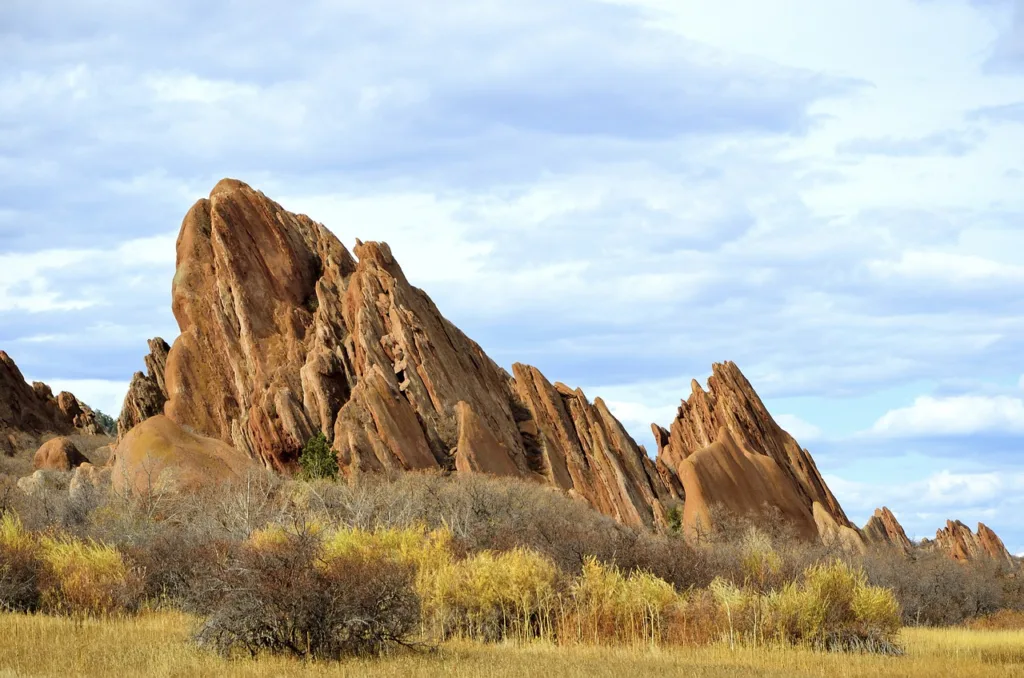Denver, often referred to as the Mile High City due to its elevation of 5,280 feet above sea level, boasts a unique climate that can leave both residents and visitors amazed. In this article, we will take a deep dive into the weather patterns, seasons, and intriguing climatic aspects that make Denver’s weather so fascinating.
Understanding Denver’s Elevation
Before delving into Denver’s weather, it’s crucial to understand its unique geography. Nestled at the foothills of the Rocky Mountains, Denver’s elevation plays a pivotal role in shaping its climate. This elevation has significant implications for both temperature and precipitation throughout the year.

Four Distinct Seasons
Denver experiences four distinct seasons, each with its own charm and weather characteristics.
1. Spring
Spring in Denver, typically from March to May, is a delightful time when the city comes alive with vibrant blooms. The temperatures begin to rise, with daytime highs ranging from the 50s to the 70s Fahrenheit. However, be prepared for occasional late-season snowfall.
2. Summer
Summer, spanning from June to August, is when Denver truly shines. The city basks in warm sunshine, and temperatures often reach the 80s and 90s. Rainfall is minimal during this season, making it perfect for outdoor activities.

3. Autumn
Autumn, from September to November, paints Denver in shades of gold and red as the aspen trees change their leaves. The weather is mild, with daytime temperatures in the 60s and 70s. Crisp, cool nights are a hallmark of this season.
4. Winter
Denver’s winters, from December to February, are a testament to its Rocky Mountain location. Snow is common, and temperatures can dip below freezing. Daytime highs often hover in the 30s, and it’s an excellent time for skiing in the nearby mountains.

The Infamous Snowfall
Denver’s snowfall is a topic of discussion for many. The city experiences an average of 57 inches of snow annually. Snowstorms can be intense, but the snow usually melts quickly due to Denver’s abundant sunshine.
Weather Anomalies
Denver is known for its unpredictable weather anomalies.

1. Chinook Winds
The Chinook winds, often referred to as “snow eaters,” are warm, dry winds that can dramatically increase temperatures in the midst of winter, causing rapid snowmelt.
2. Hailstorms
Denver occasionally experiences hailstorms, particularly during the summer months. Hailstones can vary in size, from small pellets to golf ball-sized chunks.
3. Tornadoes
While not as common as in other parts of Colorado, tornadoes can occur in Denver. These swirling windstorms are typically seen in late spring and early summer.

How to Dress for Denver’s Weather
Packing for Denver can be challenging due to the weather’s unpredictability. It’s advisable to layer clothing, ensuring you’re prepared for temperature swings throughout the day.
Conclusion
Denver’s weather is as diverse as its landscape. From snow-covered winters to sunny summer days, this Mile High City offers a climate that is nothing short of intriguing. Understanding its unique weather patterns will undoubtedly enhance your visit to this remarkable city.
Similar Articles
FAQs
1. Is Denver a good place for outdoor activities year-round?
Yes, Denver’s climate allows for a wide range of outdoor activities throughout the year, from skiing in the winter to hiking and biking in the summer.
2. How does Denver’s elevation affect the weather?
Denver’s high elevation leads to lower oxygen levels and can impact your body’s response to exercise. It can also cause more intense UV radiation, so sun protection is essential.
3. What’s the best time to visit Denver for mild weather?
For mild weather and outdoor adventures, consider visiting Denver in the spring or autumn when temperatures are comfortable, and the city is less crowded.
4. Are tornadoes in Denver dangerous?
While tornadoes can occur in Denver, they are relatively rare and typically not as destructive as those seen in other regions of the United States.
5. Does Denver have a monsoon season?
Denver experiences a mild monsoon season in late summer when brief afternoon thunderstorms can bring heavy rain. However, it’s not as pronounced as in other parts of the Southwest.









